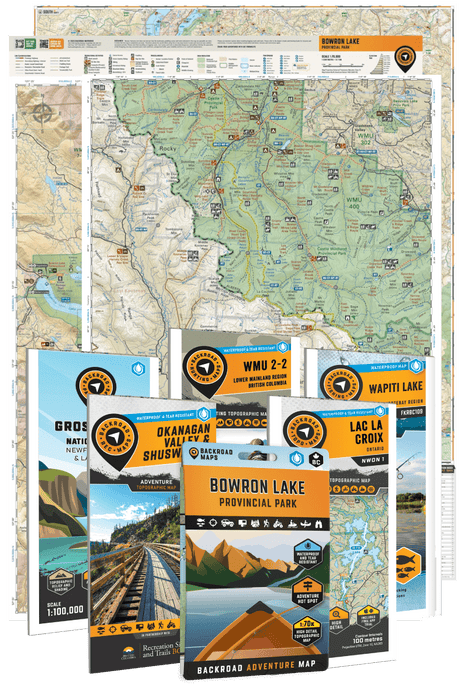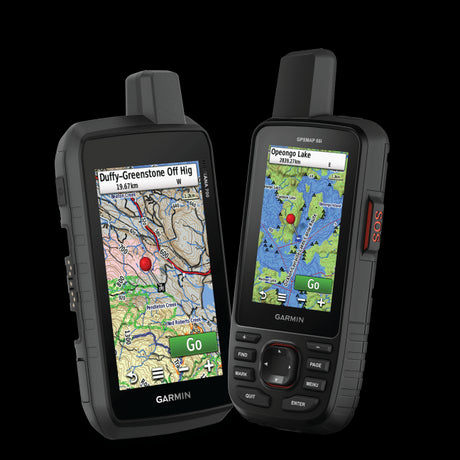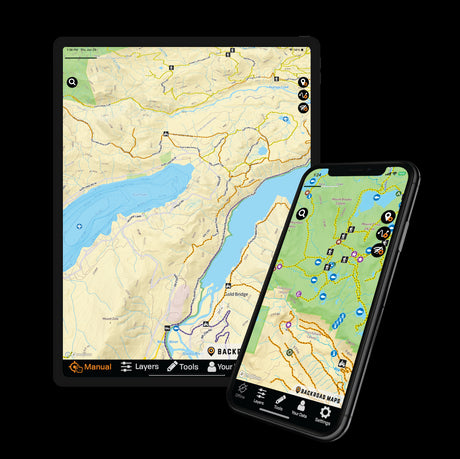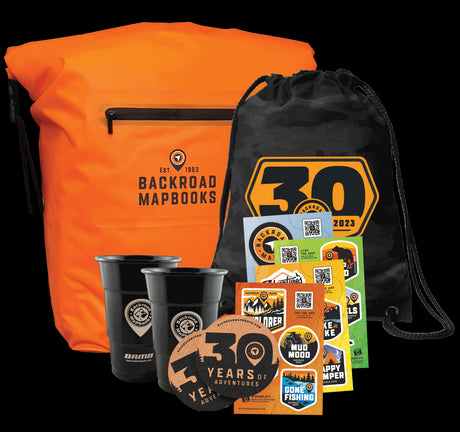 There are also steps you need to take while in the mountains to assess the risk of avalanche – this is where formal training is important. Temperature, wind, snowfall and rain are all factors in avalanche risk and a snow stabilty test will tell you if the conditions are safe. A Stability Test is a procedure used to estimate the stability of the snowpack, often done in a snowpit with common tests including the Rutschblock, compression or tap test, cornice drop, and slope cut. To learn how to do a stability test in the backcountry - check out Bruce Jamieson's incredible avalanche safety videos or follow professional Avalance expert Bruce Jamieson on Vimeo
One at a Time:
When travelling up or down a slope that has the potential for a slide, only allow one person on the slope at a time. All others should watch from a safe location and avoid stopping above or below avalanche-prone areas. If a slide does occur, it is best for one person to be in the affected area rather than the whole group.
Stay on the Scene:
If your riding partner is buried in an avalanche, do not go for help. In most cases, you only have fifteen minutes to find them before their air runs out. Establish a “last-seen point,” yell for help to others and use your beacon and probe to locate the victim.
Stay Alert:
Avalanche conditions can change throughout the day. Your initial assessment of danger may be inaccurate as time passes, or as you move to a different location.
Hopefully, you will never be in a situation where you have to locate a buried friend. But avalanches do happen, and if you or a friend are caught in one, only the proper training and equipment can save lives. Any slope with an angle greater than 30° can slide, so you should always be vigilant when playing in our beautiful backcountry. With so many amazing mountains to explore in Canada, there is no reason to put your adventures to a premature end!
Along with exercising proper avalanche safety techniques, it is important to stay oriented while exploring the outdoors this winter. We offer a wide selection of Backroad Mapbooks and Backroad GPS Maps to help you get into and out of the backcountry with confidence. From all of us here at Backroad Mapbooks, stay safe and have fun!
If you have had a close call with an avalanche, or have had any special tips or handy knowledge from your trips out in the backcountry, leave a comment below and tell us some key things that have helped you in a dire situation!
There are also steps you need to take while in the mountains to assess the risk of avalanche – this is where formal training is important. Temperature, wind, snowfall and rain are all factors in avalanche risk and a snow stabilty test will tell you if the conditions are safe. A Stability Test is a procedure used to estimate the stability of the snowpack, often done in a snowpit with common tests including the Rutschblock, compression or tap test, cornice drop, and slope cut. To learn how to do a stability test in the backcountry - check out Bruce Jamieson's incredible avalanche safety videos or follow professional Avalance expert Bruce Jamieson on Vimeo
One at a Time:
When travelling up or down a slope that has the potential for a slide, only allow one person on the slope at a time. All others should watch from a safe location and avoid stopping above or below avalanche-prone areas. If a slide does occur, it is best for one person to be in the affected area rather than the whole group.
Stay on the Scene:
If your riding partner is buried in an avalanche, do not go for help. In most cases, you only have fifteen minutes to find them before their air runs out. Establish a “last-seen point,” yell for help to others and use your beacon and probe to locate the victim.
Stay Alert:
Avalanche conditions can change throughout the day. Your initial assessment of danger may be inaccurate as time passes, or as you move to a different location.
Hopefully, you will never be in a situation where you have to locate a buried friend. But avalanches do happen, and if you or a friend are caught in one, only the proper training and equipment can save lives. Any slope with an angle greater than 30° can slide, so you should always be vigilant when playing in our beautiful backcountry. With so many amazing mountains to explore in Canada, there is no reason to put your adventures to a premature end!
Along with exercising proper avalanche safety techniques, it is important to stay oriented while exploring the outdoors this winter. We offer a wide selection of Backroad Mapbooks and Backroad GPS Maps to help you get into and out of the backcountry with confidence. From all of us here at Backroad Mapbooks, stay safe and have fun!
If you have had a close call with an avalanche, or have had any special tips or handy knowledge from your trips out in the backcountry, leave a comment below and tell us some key things that have helped you in a dire situation!
Snow is a ton of fun! If you are one of the many skiers, snowboarders, snowshoers or snowmobilers in Canada, then you know exactly how much fun it can be. Many of us spend the last few weeks of autumn eagerly awaiting those first few snowflakes, and once they fall we make a beeline to the mountains.
Chances are, if you like to spend time outdoors in the winter, then you know someone who has had a close encounter with an avalanche.
Avalanches are awesome examples of the forces of nature and are also one of the most hazardous aspects of wintertime recreation. Every year dozens of people in North America die in avalanches and many of them were experienced outdoorspeople who were in the wrong place, in the wrong time.
The only true way to completely avoid an avalance sitation is to remove yourself from the backcountry altogether. But if you're not willing to give up your passion for the backcountry, following the basics will certainly help you avoid them in the future.
Here are some basic things to know about avalanche safety:
Get Educated:
The first thing you should do before heading out into the backcountry is take a formal avalanche safety course. This is the number one way to reduce your risk of death and injury in an avalanche. Avalanche courses are available across Canada and a good place to find one is the Avalanche Canada website
Get the Right Gear:
A shovel, probe and beacon are essential tools for avalanche rescue. Without these and the educationi outlined in point 1, your chances of surviving an avalanche are extremely slim. It is crucial to always keep your avalance equipment within easy reach — on your person and not on your snowmobile. Your equipment should be easy to grab in an emergency sitation and won't help you if you bury in the bottom of your pack.
Check the Conditions:
Avalanche Canada has a handy, online map that shows avalanche risk across the country.
 There are also steps you need to take while in the mountains to assess the risk of avalanche – this is where formal training is important. Temperature, wind, snowfall and rain are all factors in avalanche risk and a snow stabilty test will tell you if the conditions are safe. A Stability Test is a procedure used to estimate the stability of the snowpack, often done in a snowpit with common tests including the Rutschblock, compression or tap test, cornice drop, and slope cut. To learn how to do a stability test in the backcountry - check out Bruce Jamieson's incredible avalanche safety videos or follow professional Avalance expert Bruce Jamieson on Vimeo
One at a Time:
When travelling up or down a slope that has the potential for a slide, only allow one person on the slope at a time. All others should watch from a safe location and avoid stopping above or below avalanche-prone areas. If a slide does occur, it is best for one person to be in the affected area rather than the whole group.
Stay on the Scene:
If your riding partner is buried in an avalanche, do not go for help. In most cases, you only have fifteen minutes to find them before their air runs out. Establish a “last-seen point,” yell for help to others and use your beacon and probe to locate the victim.
Stay Alert:
Avalanche conditions can change throughout the day. Your initial assessment of danger may be inaccurate as time passes, or as you move to a different location.
Hopefully, you will never be in a situation where you have to locate a buried friend. But avalanches do happen, and if you or a friend are caught in one, only the proper training and equipment can save lives. Any slope with an angle greater than 30° can slide, so you should always be vigilant when playing in our beautiful backcountry. With so many amazing mountains to explore in Canada, there is no reason to put your adventures to a premature end!
Along with exercising proper avalanche safety techniques, it is important to stay oriented while exploring the outdoors this winter. We offer a wide selection of Backroad Mapbooks and Backroad GPS Maps to help you get into and out of the backcountry with confidence. From all of us here at Backroad Mapbooks, stay safe and have fun!
If you have had a close call with an avalanche, or have had any special tips or handy knowledge from your trips out in the backcountry, leave a comment below and tell us some key things that have helped you in a dire situation!
There are also steps you need to take while in the mountains to assess the risk of avalanche – this is where formal training is important. Temperature, wind, snowfall and rain are all factors in avalanche risk and a snow stabilty test will tell you if the conditions are safe. A Stability Test is a procedure used to estimate the stability of the snowpack, often done in a snowpit with common tests including the Rutschblock, compression or tap test, cornice drop, and slope cut. To learn how to do a stability test in the backcountry - check out Bruce Jamieson's incredible avalanche safety videos or follow professional Avalance expert Bruce Jamieson on Vimeo
One at a Time:
When travelling up or down a slope that has the potential for a slide, only allow one person on the slope at a time. All others should watch from a safe location and avoid stopping above or below avalanche-prone areas. If a slide does occur, it is best for one person to be in the affected area rather than the whole group.
Stay on the Scene:
If your riding partner is buried in an avalanche, do not go for help. In most cases, you only have fifteen minutes to find them before their air runs out. Establish a “last-seen point,” yell for help to others and use your beacon and probe to locate the victim.
Stay Alert:
Avalanche conditions can change throughout the day. Your initial assessment of danger may be inaccurate as time passes, or as you move to a different location.
Hopefully, you will never be in a situation where you have to locate a buried friend. But avalanches do happen, and if you or a friend are caught in one, only the proper training and equipment can save lives. Any slope with an angle greater than 30° can slide, so you should always be vigilant when playing in our beautiful backcountry. With so many amazing mountains to explore in Canada, there is no reason to put your adventures to a premature end!
Along with exercising proper avalanche safety techniques, it is important to stay oriented while exploring the outdoors this winter. We offer a wide selection of Backroad Mapbooks and Backroad GPS Maps to help you get into and out of the backcountry with confidence. From all of us here at Backroad Mapbooks, stay safe and have fun!
If you have had a close call with an avalanche, or have had any special tips or handy knowledge from your trips out in the backcountry, leave a comment below and tell us some key things that have helped you in a dire situation!
 There are also steps you need to take while in the mountains to assess the risk of avalanche – this is where formal training is important. Temperature, wind, snowfall and rain are all factors in avalanche risk and a snow stabilty test will tell you if the conditions are safe. A Stability Test is a procedure used to estimate the stability of the snowpack, often done in a snowpit with common tests including the Rutschblock, compression or tap test, cornice drop, and slope cut. To learn how to do a stability test in the backcountry - check out Bruce Jamieson's incredible avalanche safety videos or follow professional Avalance expert Bruce Jamieson on Vimeo
One at a Time:
When travelling up or down a slope that has the potential for a slide, only allow one person on the slope at a time. All others should watch from a safe location and avoid stopping above or below avalanche-prone areas. If a slide does occur, it is best for one person to be in the affected area rather than the whole group.
Stay on the Scene:
If your riding partner is buried in an avalanche, do not go for help. In most cases, you only have fifteen minutes to find them before their air runs out. Establish a “last-seen point,” yell for help to others and use your beacon and probe to locate the victim.
Stay Alert:
Avalanche conditions can change throughout the day. Your initial assessment of danger may be inaccurate as time passes, or as you move to a different location.
Hopefully, you will never be in a situation where you have to locate a buried friend. But avalanches do happen, and if you or a friend are caught in one, only the proper training and equipment can save lives. Any slope with an angle greater than 30° can slide, so you should always be vigilant when playing in our beautiful backcountry. With so many amazing mountains to explore in Canada, there is no reason to put your adventures to a premature end!
Along with exercising proper avalanche safety techniques, it is important to stay oriented while exploring the outdoors this winter. We offer a wide selection of Backroad Mapbooks and Backroad GPS Maps to help you get into and out of the backcountry with confidence. From all of us here at Backroad Mapbooks, stay safe and have fun!
If you have had a close call with an avalanche, or have had any special tips or handy knowledge from your trips out in the backcountry, leave a comment below and tell us some key things that have helped you in a dire situation!
There are also steps you need to take while in the mountains to assess the risk of avalanche – this is where formal training is important. Temperature, wind, snowfall and rain are all factors in avalanche risk and a snow stabilty test will tell you if the conditions are safe. A Stability Test is a procedure used to estimate the stability of the snowpack, often done in a snowpit with common tests including the Rutschblock, compression or tap test, cornice drop, and slope cut. To learn how to do a stability test in the backcountry - check out Bruce Jamieson's incredible avalanche safety videos or follow professional Avalance expert Bruce Jamieson on Vimeo
One at a Time:
When travelling up or down a slope that has the potential for a slide, only allow one person on the slope at a time. All others should watch from a safe location and avoid stopping above or below avalanche-prone areas. If a slide does occur, it is best for one person to be in the affected area rather than the whole group.
Stay on the Scene:
If your riding partner is buried in an avalanche, do not go for help. In most cases, you only have fifteen minutes to find them before their air runs out. Establish a “last-seen point,” yell for help to others and use your beacon and probe to locate the victim.
Stay Alert:
Avalanche conditions can change throughout the day. Your initial assessment of danger may be inaccurate as time passes, or as you move to a different location.
Hopefully, you will never be in a situation where you have to locate a buried friend. But avalanches do happen, and if you or a friend are caught in one, only the proper training and equipment can save lives. Any slope with an angle greater than 30° can slide, so you should always be vigilant when playing in our beautiful backcountry. With so many amazing mountains to explore in Canada, there is no reason to put your adventures to a premature end!
Along with exercising proper avalanche safety techniques, it is important to stay oriented while exploring the outdoors this winter. We offer a wide selection of Backroad Mapbooks and Backroad GPS Maps to help you get into and out of the backcountry with confidence. From all of us here at Backroad Mapbooks, stay safe and have fun!
If you have had a close call with an avalanche, or have had any special tips or handy knowledge from your trips out in the backcountry, leave a comment below and tell us some key things that have helped you in a dire situation!







